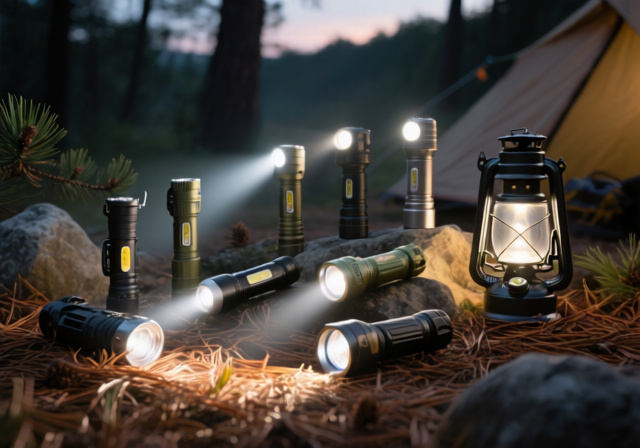



The debate between binoculars vs monoculars has puzzled outdoor enthusiasts, bird watchers, and photographers for years. While both optical devices serve the fundamental purpose of magnifying distant objects, they differ significantly in design, functionality, and practical applications. Understanding these differences is crucial for making an informed decision that matches your specific needs and activities. In 2025, with advances in optical technology and coating systems, the performance gap between these two devices has both narrowed and evolved in fascinating ways.
To truly grasp the difference between binocular and monocular devices, we need to start with their basic construction and operation. Binoculars, derived from the Latin words ‘bi’ (two) and ‘oculus’ (eye), are essentially two synchronized telescopes mounted side by side. This dual-barrel design allows users to observe distant objects with both eyes simultaneously, creating a natural stereoscopic view that mimics human vision.
Monoculars, on the other hand, come from ‘mono’ (one) and ‘ocular’ (eye), representing a single optical tube designed for viewing with one eye. Think of a monocular as half a binocular or a compact telescope that fits in your palm. This fundamental structural difference drives many of the practical distinctions between these devices.
The optical principles remain similar in both devices. Light enters through the objective lens, passes through a series of prisms (typically Porro or roof prisms), and exits through the eyepiece. The prisms correct the inverted image produced by the lenses, ensuring you see an upright view. In 2025, most quality optics use either BaK-4 or BaK-7 glass prisms, with BaK-4 offering superior light transmission and edge-to-edge clarity.
The question “are binoculars better than monoculars” doesn’t have a simple yes or no answer. Each excels in different scenarios based on their inherent design characteristics. Let’s examine the technical aspects that influence performance.
Field of View Comparison: Binoculars typically offer a wider perceived field of view due to binocular vision. When both eyes work together, your brain processes a broader visual field with better peripheral awareness. For instance, an 8×42 binocular might provide a field of view of 420 feet at 1,000 yards, while a monocular with identical specifications shows the same angular field but feels narrower due to single-eye viewing.
Light Gathering Capabilities: While both devices with the same objective lens diameter (say 42mm) gather equal amounts of light per tube, binoculars provide a brighter perceived image. This isn’t because they collect twice the light, but rather because binocular summation in your visual cortex enhances the brightness perception by approximately 1.4 times. This makes binoculars particularly advantageous in low-light conditions like dawn or dusk wildlife observation.
Image Stability and Eye Fatigue: Here’s where the difference between binocular and monocular devices becomes most apparent. Binoculars distribute the viewing load across both eyes, significantly reducing eye strain during extended observation sessions. Professional bird watchers often report being able to use binoculars for hours without discomfort, while monocular use typically causes fatigue after 15-30 minutes of continuous viewing.
Magnification and Shake: Both devices suffer from image shake at higher magnifications, but monoculars can be more challenging to hold steady. The single-handed operation and lack of triangulated support (which binoculars provide through their bridge) make monoculars more susceptible to hand tremor. This is why many high-magnification monoculars (12x and above) include tripod mounting threads as standard.
While technique and purpose matter most, certain equipment characteristics can significantly impact your viewing experience:
Modern optics include features that enhance usability. Image stabilization, found in models like the Canon 10x42L IS WP binoculars, compensates for hand shake but adds weight and requires batteries. Ranging reticles in hunting monoculars help estimate distance. Smartphone adapters, increasingly common in monoculars, enable digiscoping for photography enthusiasts.
Bird watching represents one of the most demanding optical applications, requiring clear views of small, fast-moving subjects often partially obscured by foliage. Binoculars dominate this field for several compelling reasons. The wider field of view helps track birds in flight, while binocular vision provides depth perception crucial for spotting birds among branches at varying distances.
Serious birders typically choose 8×42 binoculars as their primary tool, with models like the Swarovski NL Pure 8×32 setting the standard for optical excellence. The 8x magnification provides sufficient detail while maintaining a wide field of view (typically 420-450 feet at 1,000 yards), essential for locating and following active birds.
However, monoculars serve specific birding scenarios well. Urban birders appreciate the discretion of a pocket monocular for quick park observations. Backpacking birders might carry a lightweight monocular like the Hawke Endurance ED 10×42 as a compromise between optical quality and pack weight. Some birders even carry both: binoculars for serious observation sessions and a monocular for spontaneous sightings.
Hunters face unique challenges that make the binocular vs monocular choice particularly important. Pre-dawn departures, extended glassing sessions, and the need for steady observation all factor into the decision. Many hunters actually employ both tools strategically.
Binoculars excel during extended glassing sessions when searching for game across valleys or mountainsides. The reduced eye fatigue allows hunters to scan systematically for hours. The depth perception helps judge distances and terrain features. Experienced hunters often choose 10×42 binoculars for open country or 8×32 models for dense forest hunting.
Monoculars offer advantages in specific hunting scenarios. Their compact size makes them ideal for bow hunters who need minimal gear. The quick deployment suits spot-and-stalk hunting where rapid target acquisition matters. Thermal monoculars have revolutionized predator and hog hunting, with models like the Nocpix Vista series providing heat detection capabilities impossible with traditional optics.
Travelers face the eternal challenge of balancing capability with portability. For international travel, where every ounce matters and security screening adds complexity, compact monoculars shine. They slip easily into jacket pockets, don’t attract unwanted attention, and provide sufficient magnification for landmarks, wildlife, and scenic vistas.
Adventure travelers engaging in multiple activities might prefer versatile compact binoculars. The 8×25 or 10×25 size category offers remarkable capability in palm-sized packages. These prove ideal for safari vehicles, boat excursions, and mountain hiking where weight matters but extended viewing comfort remains important.
Urban explorers and museum visitors often overlook monoculars, yet they excel in these environments. Low magnification models (5x-6x) with close focus capabilities reveal architectural details, artwork textures, and theater performances without the bulk of binoculars.
| Problem | Cause | Solution |
|---|---|---|
| Eye fatigue with monocular | Single eye bearing full load | Take breaks every 10-15 minutes; consider binoculars for extended use |
| Difficulty tracking moving subjects | Narrow field of view | Choose lower magnification (7x-8x); practice smooth panning movements |
| Shaky image at high magnification | Natural hand tremor amplified | Use tripod or monopod; brace against stable object; consider image-stabilized models |
| Poor low-light performance | Insufficient objective lens size | Upgrade to larger objective (42mm-50mm); ensure fully multi-coated optics |
| Glasses compatibility issues | Inadequate eye relief | Look for 15mm+ eye relief; use twist-up eyecups properly |
Set up three objects at different distances (10, 25, and 50 yards). Practice locating all three quickly with both binoculars and monoculars. Note how the wider binocular field helps maintain spatial awareness while the monocular requires more scanning movement.
Focus on a detailed subject (bird feeder, sign, or textured surface) at 30 yards. Hold the view for 60 seconds with each device type. Notice fatigue patterns and develop personal bracing techniques that work for your physiology.
During twilight, compare the same scene through binoculars and monoculars with identical specifications. Observe how binocular summation enhances brightness perception and extends usable viewing time in diminishing light.
Absolutely! This represents one scenario where monoculars clearly outperform binoculars. Users with significant vision disparity between eyes often find monoculars more comfortable since they can use their stronger eye exclusively without the distraction of trying to merge two different quality images.
While personal preference varies, 7x-8x magnification provides the ideal balance for most birding situations. This range offers sufficient detail to identify field marks while maintaining a wide field of view for tracking movement. Lower magnifications (5x-6x) work for large birds or close observations but may frustrate when trying to identify smaller species.
Binoculars generally provide superior astronomical viewing due to the comfort of two-eyed observation during extended sky scanning. The 7×50 or 10×50 configurations popular for astronomy maximize light gathering. However, monoculars can serve as excellent quick-look instruments for checking specific celestial objects or as ultralight travel astronomy tools.
Both device types now commonly feature weatherproofing, but binoculars’ larger size sometimes provides better grip in wet conditions. Monoculars excel in rapidly changing weather since they deploy faster and expose less glass surface to precipitation. For extreme cold, consider that binoculars may fog more readily due to larger air volume inside the tubes.
The choice between binoculars and monoculars ultimately depends on your specific needs, physical considerations, and intended use patterns. Neither device universally outperforms the other; instead, each excels in particular niches. Many serious outdoor enthusiasts eventually own both, using binoculars for dedicated observation sessions and keeping a monocular handy for spontaneous viewing opportunities.
To make your final decision on binoculars vs monoculars, consider renting or borrowing both types for real-world testing in your intended environment. Pay attention to comfort during extended use, ease of achieving sharp focus, and how naturally each device integrates into your outdoor activities. In 2025, with excellent options available in both categories, you can find optics that enhance your connection with the natural world regardless of which type you choose.
Remember that optical quality matters more than device type. A well-made monocular will outperform cheap binoculars, and vice versa. Invest in the best quality your budget allows, focusing on reputable manufacturers who stand behind their products with solid warranties. Whether you choose the immersive experience of binoculars or the convenient portability of monoculars, quality optics open new worlds of observation and discovery.







